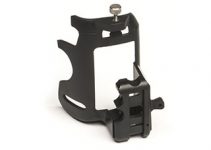Seasoned colorist and fellow filmmaker Alex Jordan of Learn Color Grading and FilmSimplified has produced dozens of insightful color grading tutorials, along with a slew of dedicated courses and numerous free resources on the topic over time.
Nevertheless, he still has some handy tricks up his sleeve. Whether you are one of his 10,000+ students or you just found out about his existence, the following video that reveals an advanced color correction technique with Curves in DaVinci Resolve 12.5 is another fantastic example showcasing his skills as a creative professional who spends most of his time and effort on improving colors and visual aesthetics of different professional projects in a special and skilful way.
Now, let’s cease rumbling and focus on the video below.
As Alex points out, one of the most effective ways to adjust the white balance of any image is to pick an object in your frame that has a neutral color such as white. Because this tutorial is predominantly based on utilizing Curves, you need to access those settings by clicking on the Curves icon in the Adjustment panel next to the Primaries Wheels.
As a rule, the Custom Curves are extremely effective for making more precise channel-to-channel adjustments that can be accomplished using the Color Balance controls. That’s why an essential step of this process is making sure that all RGB points of the Custom Curves are placed on the same horizontal line just as shown in the screenshot below.
Keep in mind, though, that if you decide to increase the Saturation of your image along the line, some color shifts may occur. But, these can be easily fixed by repeating the same workflow using a separate Serial Node. In case there are any parts of the image that are overexposed or over saturated, you can create a Mask to isolate them afterward.
A quick tip that you can use while tracking the Mask is to disable all color corrections that you’ve already applied to your footage in order to speed up the process by rendering only that particular part of the image. You can then desaturate or tweak the selected area by using the Hue vs Saturation tab.
After that, create a new Serial Node, go to Color in the main menu, navigate to presets and then choose Chroma Dark. That way you’ll be able to desaturate entirely all the shadow areas of your image. As a final step, add another Serial Node, head over to the Primaries Bars and stylize the look to your taste by adjusting the Gamma controls in the Primaries Wheels.
All in all, you can utilize the above color correction workflow to fix virtually any clip imported in DaVinci Resolve with ease. If you want to learn more about color grading, you can also check out the free, insightful resources on the topic alongside all the courses produced by Alex Jordan in the 4K Shooters Store.
[source: Learn Color Grading]
Disclaimer: As an Amazon Associate partner and participant in B&H and Adorama Affiliate programmes, we earn a small comission from each purchase made through the affiliate links listed above at no additional cost to you.
Claim your copy of DAVINCI RESOLVE - SIMPLIFIED COURSE with 50% off! Get Instant Access!






thanks for tutorial